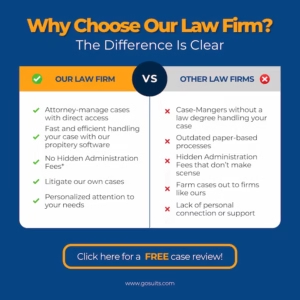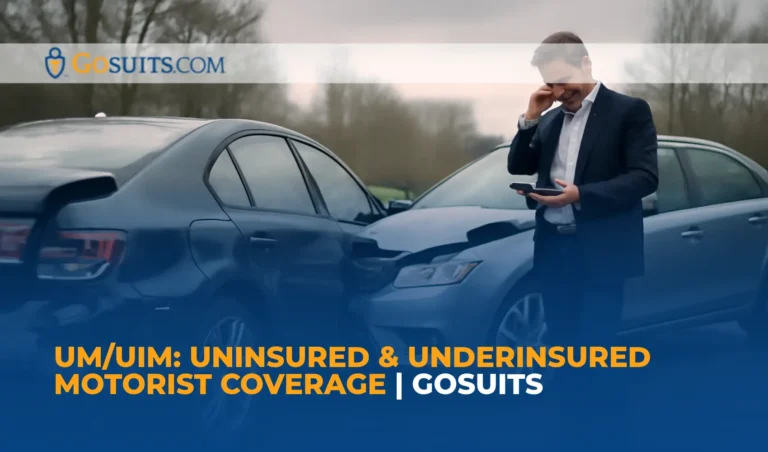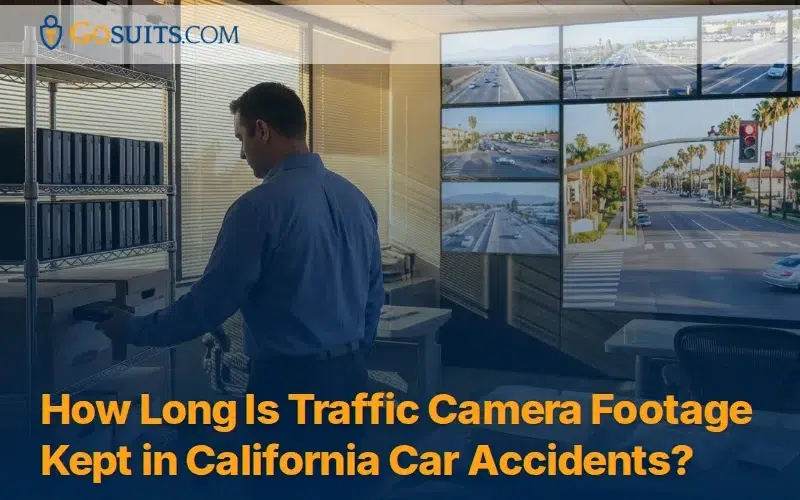If you’re searching “UM/UIM near me” after a crash, you’re likely trying to understand whether your own auto insurance can help. UM/UIM—uninsured and underinsured motorist coverage—is first-party protection on your policy that may pay when the at-fault driver has no insurance, too little insurance, or cannot be identified in a qualifying hit-and-run. It can cover injuries and, in some policies, property damage when the at-fault driver’s liability coverage is unavailable or insufficient. This safety net matters because about 1 in 8 U.S. drivers are uninsured, according to the Insurance Research Council, summarized by the Insurance Information Institute.

When does UM apply and when does UIM apply?
- UM (uninsured motorist) typically applies when the negligent driver has no liability insurance or is unknown in a qualifying hit-and-run (often subject to physical-contact or corroboration requirements in the policy).
- UIM (underinsured motorist) generally applies when the at-fault driver’s liability limits don’t fully cover your uncompensated losses, and your UM/UIM policy provides additional benefits according to its terms.
How is UM/UIM different from liability, PIP, or MedPay?
Liability insurance pays others for an at-fault driver’s negligence; it’s their policy, not yours. UM/UIM is your own coverage designed to protect you and certain insureds under your policy if the at-fault driver is uninsured or underinsured. Personal Injury Protection (PIP) and Medical Payments (MedPay) are limited no-fault benefits (availability and terms vary by state and policy) and are distinct from UM/UIM. In practice, PIP or MedPay may address immediate medical bills, while UM/UIM resolves broader uncompensated damages tied to another driver’s fault.
Does UM/UIM follow me as a driver, passenger, pedestrian, or cyclist—including rideshare or autonomous vehicles?
Often yes, subject to the policy’s terms and any exclusions. Many UM/UIM policies protect you as a driver or passenger and may also apply if you’re injured as a pedestrian or cyclist. UM/UIM can also be implicated when you’re a rideshare passenger with Uber/Lyft or involved in a crash with an autonomous vehicle such as Waymo, particularly where the at-fault party is uninsured or underinsured. Always confirm with your specific policy language.
Why UM/UIM matters in Texas, California, and Illinois
Minimum liability limits commonly fall short in serious injuries. Texas requires at least 30/60/25 (per the Texas Department of Insurance). California’s minimums increase to 30/60/15 in 2025 (per the California DMV). Illinois mandates 25/50/20 (per the Illinois Department of Insurance). Many drivers carry only these minimums, meaning serious crashes in Houston, Dallas, Austin, San Antonio, Fort Worth, El Paso; Los Angeles, San Diego, San Jose, Irvine, Los Angeles County, Orange County, Riverside; and Chicago, Cook County, Naperville, Aurora, Joliet, Springfield can quickly exceed available liability coverage. States also vary on whether UM/UIM must be offered or can be waived, which affects availability for your claim.
What UM/UIM typically covers
UM bodily injury can include medical expenses, lost wages, and general damages like pain and suffering when the at-fault driver is uninsured or in a qualifying hit-and-run. UM property damage (UMPD) can cover vehicle and other property damage caused by an uninsured driver, though many policies exclude UMPD for hit-and-runs without physical contact and other conditions—collision coverage can help address this. UIM bodily injury can provide additional benefits after you collect the at-fault driver’s liability limits but still have uncompensated losses. Common scenarios include pedestrian accidents, bicycle crashes, injuries as an Uber/Lyft rider, and incidents involving autonomous vehicles, all subject to your policy.
Hit-and-run requirements and evidence
Policies frequently require physical contact or independent corroboration for hit-and-run UM claims, and many require prompt reporting to law enforcement. Preserve evidence immediately: take photos and video (including dashcam), collect witness information, document vehicle damage, and keep copies of all medical records and bills. Early, thorough documentation can be critical to meeting policy conditions.

How do UM/UIM limits, offsets, and stacking generally work?
- Limits are often shown as split limits (for example, 50/100 per person/per accident) or a combined single limit on your declarations page.
- Offsets and exhaustion rules typically mean your UIM pays after the at-fault driver’s liability limits are paid. Some UIM is “set-off” (subtracting the at-fault limits) while others are “excess” (paying above them), which changes the recovery calculation.
- Example: In a California crash after 2025 with $100,000 in medical bills and an at-fault driver carrying 30/60, you would collect the $30,000 liability limit first; remaining damages may be addressed by your UIM up to your UIM limit, subject to offsets and policy terms.
- Stacking—combining UM/UIM limits across vehicles or policies—may be limited or prohibited by anti-stacking clauses in Texas, California, and Illinois. Outcomes depend on policy language and facts, including declarations, endorsements, resident-relative provisions, and any umbrella policies.
How to check whether you have UM/UIM
Review your policy declarations page for uninsured motorist bodily injury (UM BI), uninsured motorist property damage (UMPD), and underinsured motorist (UIM) limits. If you rejected UM/UIM, a written waiver may appear in your policy documents or online account. If you frequently rent cars or use rideshare, review those agreements for any supplemental coverage and how it coordinates with your own policy.
How to file a UM/UIM claim after a crash
- Get medical care promptly and follow your treatment plan.
- Report the crash to police quickly; many UM/hit-and-run provisions require timely law-enforcement reporting.
- Give prompt notice to your insurer; strict policy notice requirements often apply.
- Preserve evidence: photos, videos, dashcam footage, witness contacts, repair estimates, medical records, and bills.
- Be accurate and concise with your insurer; avoid guessing about fault or minimizing symptoms. Before recorded statements or broad medical releases, consider legal guidance in TX, CA, or IL.
- Calendar deadlines; policies may require arbitration or suit within contractual time limits that can be shorter than general statutes of limitation.

Texas-specific UM/UIM points
Insurers must offer UM/UIM in Texas, and any rejection must be in writing (Texas Department of Insurance). Many Texas policies require physical contact or corroboration for hit-and-run UM claims, making early investigation in Houston, Dallas, Austin, San Antonio, Fort Worth, and El Paso especially important. For improper claim handling, potential remedies may exist under Texas Insurance Code Chapters 541 and 542 for unfair practices and prompt-payment violations in appropriate cases.
California-specific UM/UIM points
California requires insurers to offer UM/UIM and permits written waivers (California Department of Insurance). Liability minimums increase to 30/60/15 in 2025, yet serious injuries often surpass those amounts. Many policies include physical-contact requirements for hit-and-run claims. California recognizes insurance bad faith for unreasonable claim handling, which can allow recovery of policy benefits and, in some cases, Brandt-type attorney’s fees tied to obtaining those benefits. Policies may include UM/UIM arbitration provisions.
Illinois-specific UM/UIM points
Illinois mandates UM bodily injury at 25/50 and requires insurers to offer UIM (Illinois Department of Insurance). With minimums at 25/50/20, serious crashes in Chicago, Cook County, Naperville, Aurora, Joliet, and Springfield often implicate UIM. Policy terms may require corroboration or physical contact for hit-and-run claims. For vexatious and unreasonable delay, Section 155 of the Insurance Code (215 ILCS 5/155) can provide limited penalties and attorney’s fees in appropriate cases.
Damages potentially recoverable under UM/UIM
Subject to policy terms and state law, compensatory damages can include medical expenses and future care, lost wages and diminished earning capacity, pain and suffering, disability, and scarring. Families may bring wrongful death claims where applicable. For Texas non-subscriber employers, only serious injury and death civil cases are considered; standard workers’ compensation matters are outside this scope.
Signs of potentially unfair UM/UIM claim handling
Be alert to unexplained delays, low evaluations that ignore medical evidence, repetitive or unnecessary document requests, and refusal to acknowledge clear liability or damages. Texas policyholders may evaluate remedies under Chapters 541 and 542; California allows tort claims for bad faith with possible Brandt fee recovery tied to policy benefits; Illinois provides Section 155 remedies for vexatious and unreasonable delay. Strict attention to contractual deadlines preserves options.
When to consider contacting a UM/UIM lawyer in Texas, California, or Illinois
It’s prudent to consult counsel when the at-fault driver is uninsured, has low limits, or fled the scene; when injuries are significant; when fault is disputed; when multiple vehicles are involved; or when questions arise about stacking, resident-relatives, or possible umbrella coverage. Coordinated strategy is crucial for complex matters such as truck accidents, rideshare incidents involving Uber/Lyft, autonomous vehicle collisions (including Waymo), pedestrian accidents, and fatal crashes involving wrongful death claims.
How much UM/UIM coverage to consider
Many drivers consider matching UM/UIM limits to their liability limits. Higher limits may provide meaningful protection where medical costs, wage loss, and long-term care could be substantial. Consider your household’s healthcare needs, local medical costs, and risk tolerance when setting limits.
Where GoSuits provides representation and the types of cases we accept
GoSuits represents clients across Texas, California, and Illinois in personal injury and wrongful death civil cases, including UM/UIM claims. We also handle non-subscriber workers’ compensation cases limited to serious injuries or death. Our service areas include Houston, Dallas, Austin, San Antonio, Fort Worth, El Paso; Los Angeles, San Diego, San Jose, Irvine, Los Angeles County, Orange County, Riverside; and Chicago, Cook County, Naperville, Aurora, Joliet, and Springfield. We’ve served thousands of clients with favorable outcomes, and we leverage proprietary technology to give clients convenient, secure access to their case files and status.

Sources supporting this UM/UIM information
For uninsured motorist rates, see the Insurance Research Council summarized by the Insurance Information Institute at https://www.iii.org/fact-statistic/facts-statistics-uninsured-motorists (IRC hub: https://www.insurance-research.org/). State minimums and UM/UIM offer/waiver rules are available through the Texas Department of Insurance (https://www.tdi.texas.gov/consumer/auto-insurance.html), the California DMV for insurance requirements and minimums (https://www.dmv.ca.gov/portal/vehicle-registration/insurance/), the California Department of Insurance (https://www.insurance.ca.gov/), and the Illinois Department of Insurance (https://idoi.illinois.gov/). For broader safety context and crash data, see NHTSA (https://www.nhtsa.gov/) and AAA Foundation research on hit-and-run (https://aaafoundation.org/).
Conclusion: Get clarity and protect your rights
If you’re facing medical bills, missed work, or long-term recovery after a crash in Texas, California, or Illinois, UM/UIM coverage may be the key to making you whole—especially in hit-and-run scenarios or when the at-fault driver carries only state minimums. The rules can be technical, deadlines strict, and evidence requirements demanding. GoSuits can help you understand your policy, coordinate claims across liability, PIP/MedPay, and UM/UIM, and pursue the full benefits available. We offer a free, no-obligation consultation and compassionate guidance tailored to your situation. Call GoSuits at (844) 467-8487 to speak with our team today.
—
Attorney Advertising. This article is for general informational purposes only and is not legal advice. Reading it does not create an attorney–client relationship with GoSuits. Laws, regulations, policy language, and deadlines change and vary by jurisdiction; consult an attorney about your specific facts and applicable deadlines. Past results do not guarantee a similar outcome. Availability of services is subject to state bar rules and professional responsibility requirements in Texas, California, and Illinois.






